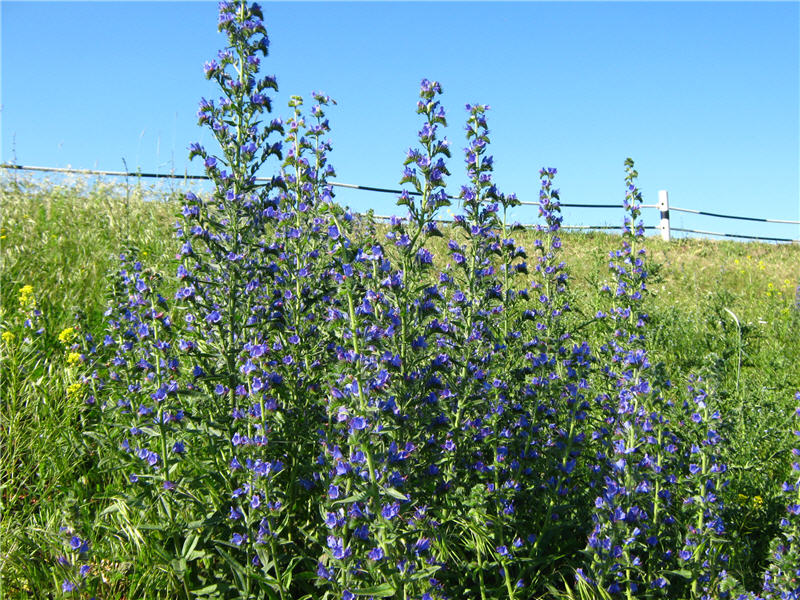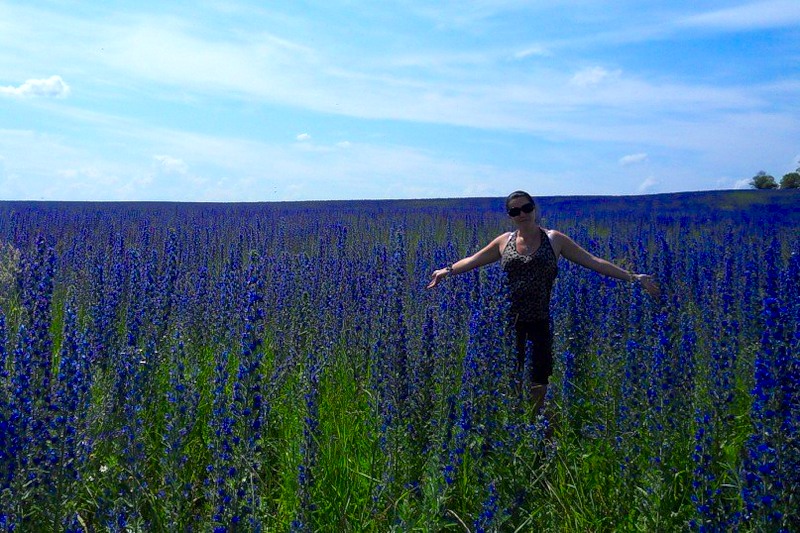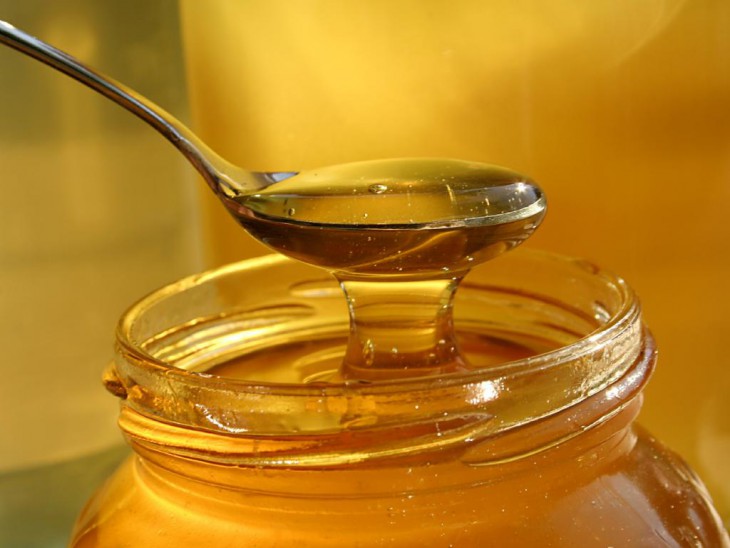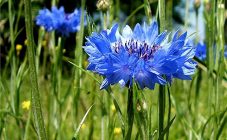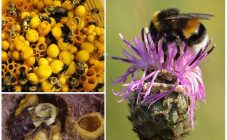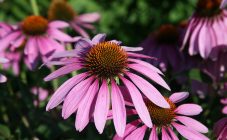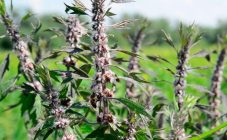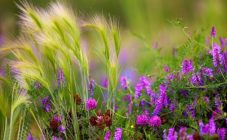Content:
- The appearance of a honey plant
- Varieties
- What honey bees like
- Agricultural technology for growing a bruise The bruise is characterized by unpretentiousness when planting and leaving. The plant does not require a special growing climate. The honey plant grows well both among stones and in the fields.
- Bruise honey: properties and contraindications
- Scope of application
- Contraindications
To harvest a rich honey crop, it is important to grow melliferous plants around the apiary. However, not all owners can start sowing honey crops or change the location of the hives. The inheritance of the beekeeping farm forces us to be content with what we have, or to look for ways of transformation.
Experienced beekeepers regularly inspect the vegetation. Most beekeepers downplay the bruise, a melliferous herb, mistaking it for a weed. The plant grows on dry slopes, ravines, in the forest on wastelands and in the steppe. It grows near roads, buildings, on pasture for domestic cattle. Growing in an area near the apiary will significantly increase honey production.
The appearance of a honey plant
Bruise is a melliferous plant that belongs to the Burachnikov family and has an interesting external appearance. The growth of a two-year culture varies from 1 to 1.8 m. The blooming of a bruise of an ordinary honey plant occurs in the year following sowing.
The buds have a pinkish hue, which gradually changes to a deep blue color. At the bruise, the flowers of the honey plant are large, gather in curls on long pedicels. Countless curls at the top of the stem form a pyramidal, spike-shaped inflorescence. Leaves are elongated-lanceolate, sitting. The root system penetrates to a great depth into the soil and feeds on minerals.
Despite the plant's benefits for bees, bruising is an unsafe and poisonous crop. To retain moisture, the honey plant has elongated, hard spines to retain water. The structure of the foliage allows a reduction in the cost of effort for nutrition and the release of energy for budding.
Bruise is a honey plant that blooms with the arrival of summer and does not stop until frost comes. During this period, up to 1500 flowers are formed on the stem. The buds have a lifespan of 48 hours, within two days they give up to 16 mg of flower nectar. In the common people, culture is called differently:
- runnik blue;
- blush.
The change in color serves as a guide for the bees and attracts attention. When fertilization occurs, the honey plant turns blue on the second day of life.
Varieties
There are such garden types of bruises:
- A gray-green bruise is a perennial plant, up to 3 meters high, blooms with blue tubular flowers. Bare erect stem.
- Whitening bruise is an evergreen species of plant, reaching a height of 1 meter. It blooms in blue flowers with pink stamens.
- Italian bruise is a biennial plant, up to 120 cm high. It blooms with light purple or reddish flowers.
- Plantain bruise is very similar to an ordinary species. It is the smallest species, reaching only 30 cm in height. It blooms with blue flowers, flowering lasts a long time, while the plant gives off a sweet persistent aroma.
- Perez's bruise is an evergreen species that reaches three meters in height. It blooms with tubular pink flowers that sit tightly around the leaves.
- Wildprett's bruise is biennial, grows up to 3 meters long, blooms with pink-red flowers.
What honey bees like
The blue of the flowers plays a decisive role in the life of the honey plant, and attracts the Hymenoptera. The brightness and beauty of the inflorescences fascinate the bees. Fading color and faint aroma make the flower hardly noticeable. Therefore, the flowers turn blue to attract buzzing insects to the melliferous plant.
Why do bees prefer common bruise? Preferred bees have a bruise honey plant. It is included in the top ten demanded melliferous crops.
A distinctive feature of the bruise is the release of nectar in any weather conditions. This feature is appreciated by bees who do not fly past the bruise during the day. Actively bruise herb melliferous plant is visited at noon.
Dry wind and heat reduce nectar production, but only slightly compared to other melliferous crops. In good weather conditions, thanks to the bruise, the bee colony produces from 6 to 8 kg of honey. From 1 plant, 0.8-2.5 mg of nectar is obtained. Honey production from 1 hectare of honey field is 800-850 kg. This indicator is significantly higher than that of other melliferous plants:
- sweet clover - 200-300 kg;
- spring rapeseed - 60-100 kg;
- sainfoin - 100-200 kg;
- sunflower - 25-40 kg;
- buckwheat - 70-100 kg;
- phacelia - 200-300 kg.
Agricultural technology for growing a bruise
The bruise is characterized by unpretentiousness when planting and leaving. The plant does not require a special growing climate. The honey plant grows well both among stones and in the fields.
It is now difficult to predict the period of frost onset due to global warming and climate change. In areas with a pronounced continental climate, a sharp change in weather and the onset of frost are recorded. For the middle Russian latitudes, a mild climate is typical, but excessively warm weather can suddenly be replaced by severe frosts. For the survival of the honey plant, an abundant snow cover is needed, which serves as a protector for young plantations.
The ideal time to sow an ordinary bruise is at the end of the spring season or the height of summer. This time period will allow the culture to strengthen and winter safely.
For a bruise of a melliferous plant, the cultivation technique involves any type of soil. However, the culture does not like shade and growth in peatlands and wetlands. For a rich flowering of melliferous crops, a loose, nutritious soil with the addition of organic matter is suitable.
Sowing material is planted using a special device or manually. Density of planting of seeds is avoided: 5 kg of bruise is needed per 10,000 m2. The depth of planting seeds fluctuates in the range of 1-3 cm. The optimum temperature regime for the emergence of sprouts is +10 ° С, for development and budding it will take + 20 ... + 28 ° С.
When growing, an ordinary bruise does not need a special arrangement and additional measures. However, it is useful sometimes to feed with organic fertilizer.
During cultivation, it is taken into account that the bruise blooms in the second year. Therefore, one-year honey plants are often sown near the site because of nectar, while the blue runnik grows. A year later, they acquire a full-fledged adult culture, as well as a real plantation to provide flower pollen.
There is no need to sow and distribute the honey plant. Further, the plant itself sheds seeds, occupies a free territory. In a couple of years, the blue perennial will occupy a vast area, this process will take 3 years.
Bruise honey: properties and contraindications
The bruised honey product is loved by consumers in many countries because of its quality and super valuable medicinal properties.
Bruise honey has a number of benefits:
- quality factor;
- softness of taste;
- dense consistency;
- attractive smell;
- good storage.
Amber, slightly light honey weakly crystallizes, which is just right for stocks of bees for the winter.
An ordinary bruise will delight Hymenoptera with an abundance of pollen, beekeepers - with a lovely look.
Scope of application
Bruise is used as a healing agent in alternative medicine in Belarus, the regions of Siberia, the Caucasus, Central Asia. Decoctions and compresses are prepared from the dried plant. It consists of special elements and alkaloids, therefore, accuracy in working with raw materials is important.
An ordinary bruise is used for:
- gout;
- rheumatoid arthritis;
- stretching the tendons;
- laryngitis, bronchitis, whooping cough;
- epilepsy;
- hemorrhage.
Honey is characterized by an excellent disinfecting and healing effect, therefore it is appropriate for the treatment of wounds and burns, hematomas and abscesses, microtraumas and ulcers. It is used in the treatment of arthrosis, bruises, osteochondrosis and other pathologies of the musculoskeletal system.
Blue honey serves to strengthen the immune system, heals colds. The product is effective when a cough appears: it copes well with phlegm and illness. In addition, a decoction for coughing is recommended.
For cooking, only the leaves and tops are collected, which are dried. An infusion is made from the powder and used as a soothing and thinning drug. To prepare the tincture, take 250 ml of liquid and 1 tsp. bruise. The mixture is boiled for 15 minutes. After filtration, take 1/3 cup three times a day.
The healing properties of honey products extend to the intestines and stomach: it ideally removes toxins from the body, fights liver and gastrointestinal disorders. The bruised product has a sedative effect: it is often prescribed for systematic overexertion, neurasthenia, intellectual or physical fatigue.
Contraindications
Medicinal properties allow the use of bruised honey for various disorders. The remedy is contraindicated in case of individual intolerance or allergic reaction.
Bruise occupies a leading position among honey plant cultures and is appreciated by beekeepers. Growing near an apiary will significantly increase honey productivity. In addition, bruised honey is widely used as a folk remedy for the treatment of many ailments. Breeders have brought out a perennial bruise today, which is in no way inferior to a biennial in terms of useful properties. However, the variety did not gain popularity.
